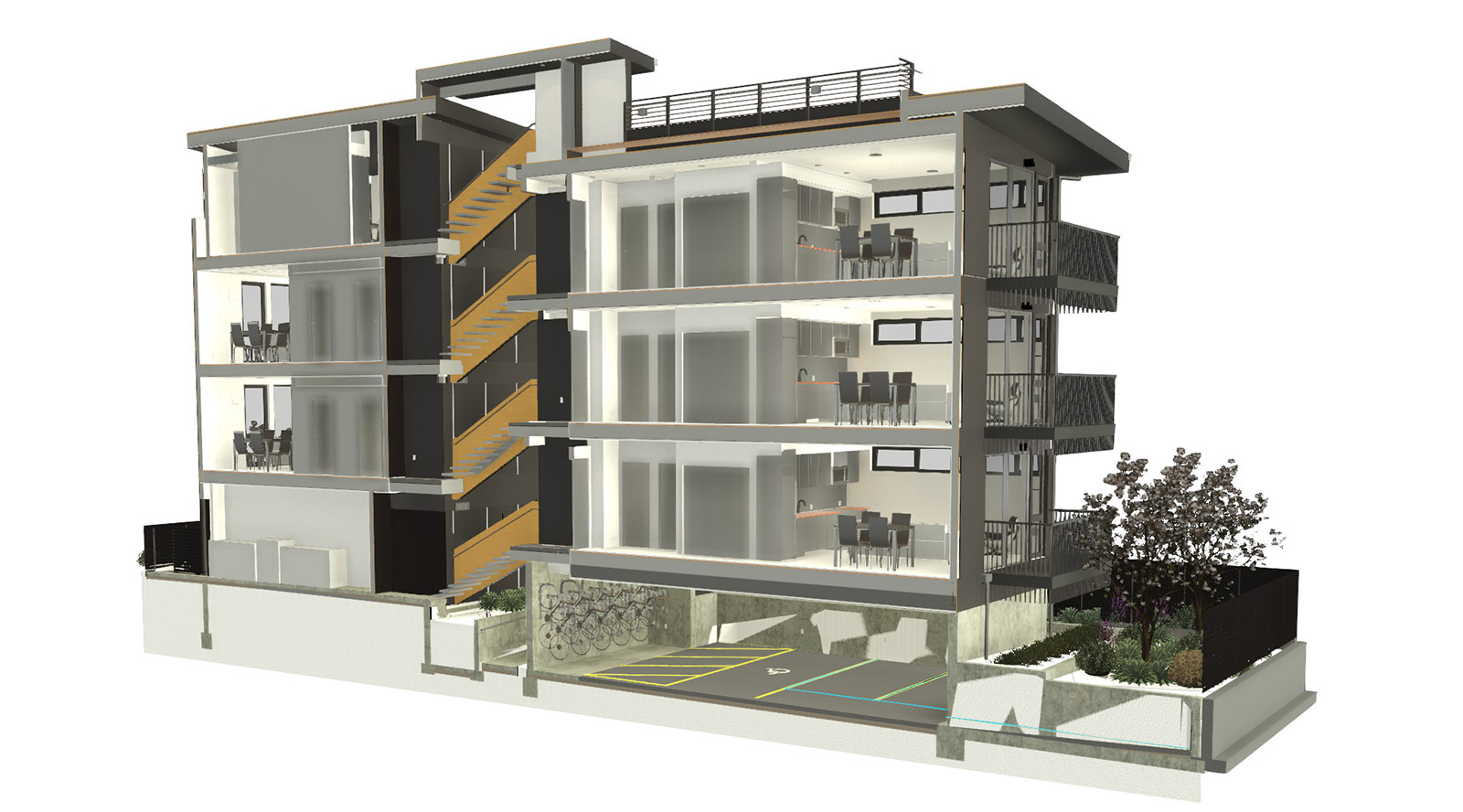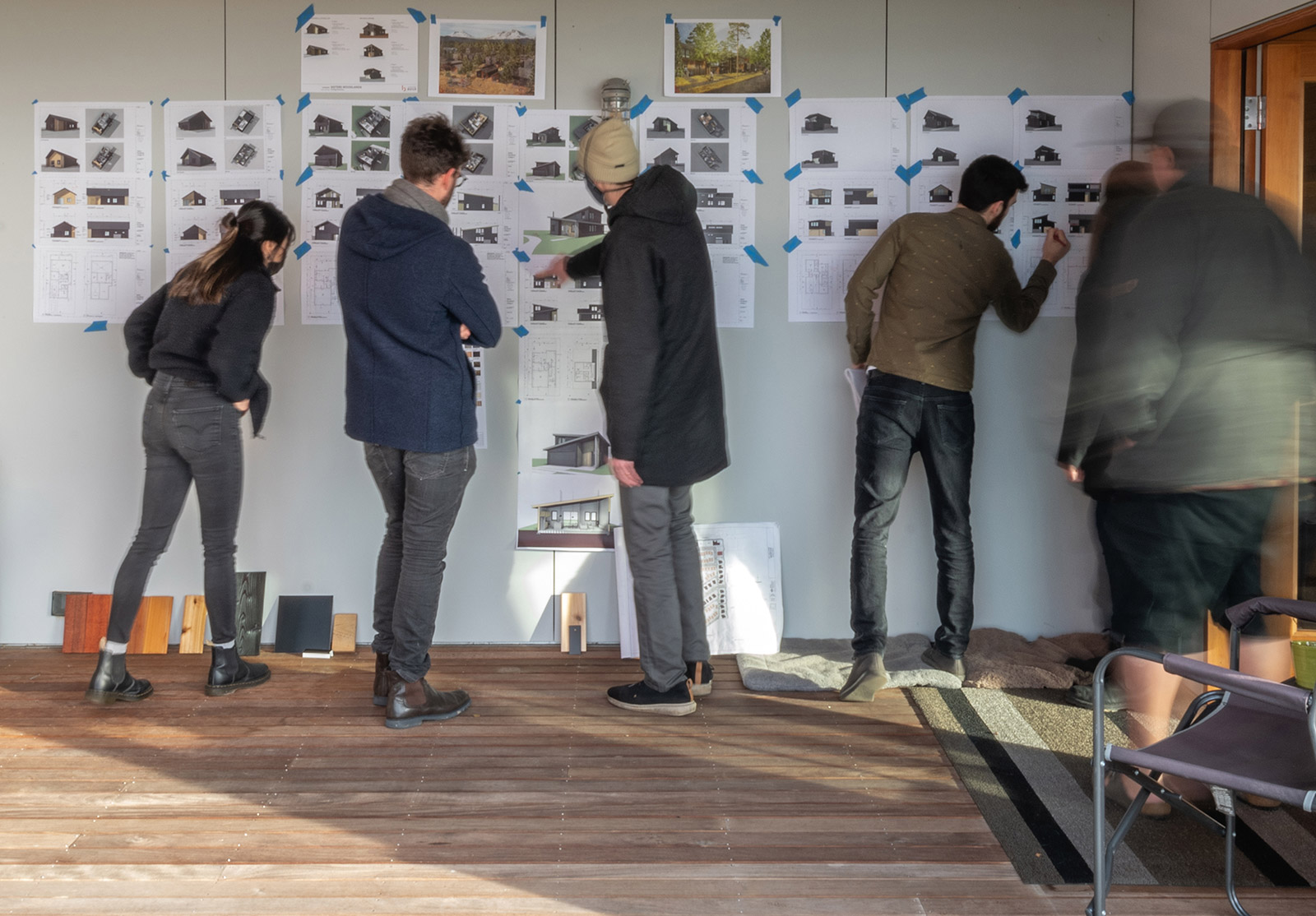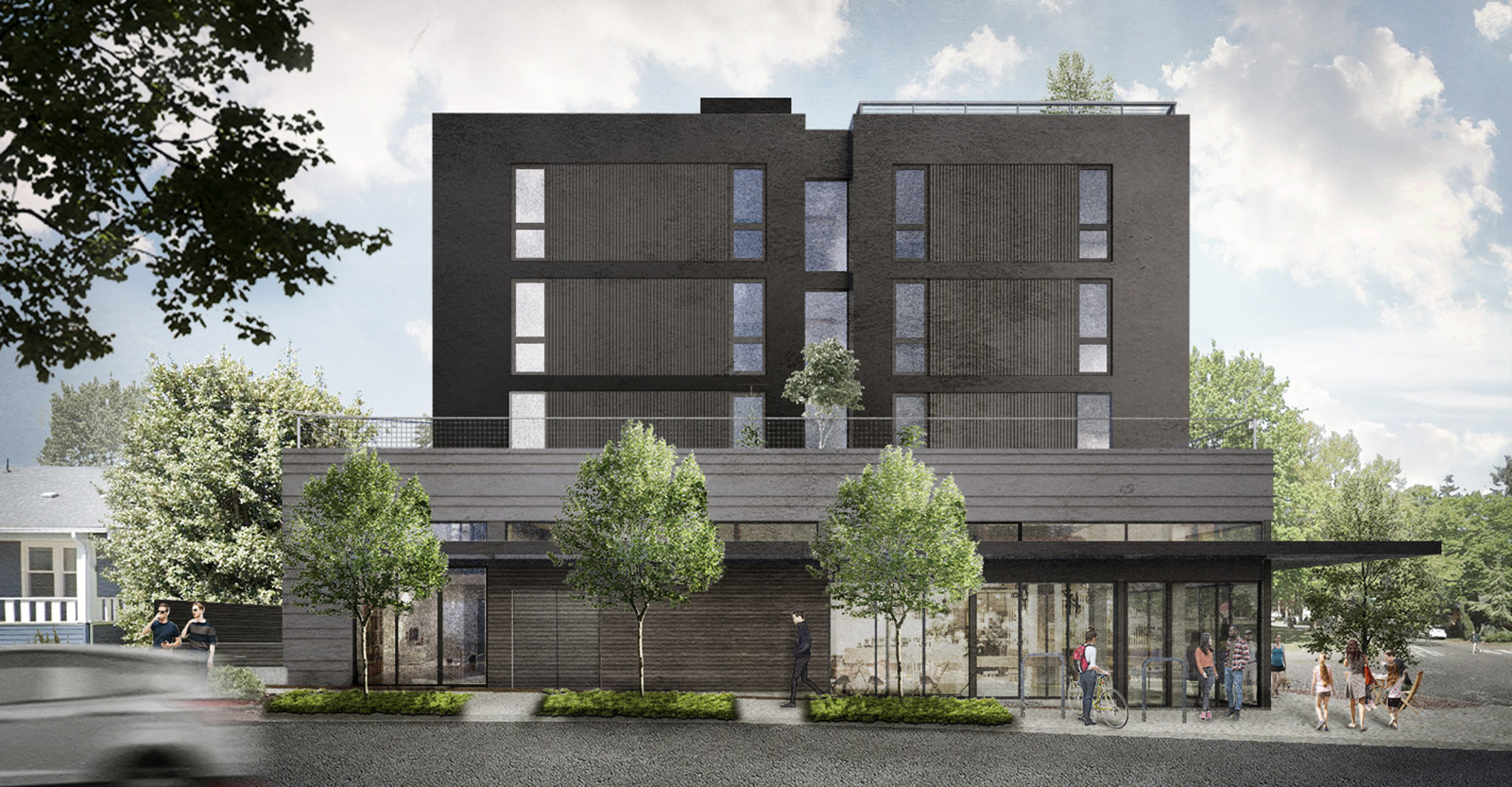For those outside of the design and construction industries, Building Information Modeling, BIM, came to prominence in the ‘10s and significantly advanced the process of designing architecture. The umbrella of BIM software includes many different programs, with the most prevalent in today’s architecture environment being Revit and ArchiCAD. Online definitions of BIM vary widely, and internet explanations can be a bit mind-numbing, so we’ll summarize it as the 3D digital modeling of architecture with smart data. Previous to BIM technology, an architect would draw flat 2D plans, exterior elevations, interior elevations, and other drawings such as reflected ceiling plans and framing plans—each of these being exclusive of each other, and sometimes drawn in completely different files. Software was eventually developed to create 3D representations within programs like Form-Z, Rhino, and the more user friendly SketchUp, however these programs did not allow embedded information or use smart objects.
BIM responded to how the computer wants to think about architecture by creating one model in which all these different drawings work together as one, and it also developed a platform where components and objects are smart: they contain embedded information that the software can use in a variety of ways. Views of a model can be organized into the necessary drawings noted above, and if an architect changes the rise and run of a stair, for instance, this revision is only made once in the model, while corresponding plans, sections, elevations, details, and even spreadsheets are updated automatically by the software. At the same time, pre-built components, such as stairs, windows, doors and appliances can be downloaded and inserted into the model as smart and trackable elements. The software can then create lists and spreadsheets with summaries of all the various components, areas, and other important metrics. It’s been a game changer in the architecture profession.

But like any good technology, the automated processes and predesigned components of BIM require human direction; without the strategic human touch, the author of our built-environments could easily become BIM itself. If you’ve ever wondered why buildings are all starting to look like the same bland monotony in a particular part of town, the careless use of BIM is likely a contributing factor in this new age of design. Without proper consideration, curation, and layering of design poetics, it’s far too convenient for architects to use pre-packaged stair blocks, template wall sections, and boilerplate window bays, which will, in turn, produce buildings that not only look similar, but lack design that is appropriate to their place, time, and circumstances.
BUILD adopted BIM several years ago, and we did so cautiously and thoughtfully. Understanding the pitfalls of software that is more than happy to design everything for you with a pre-designed kit of parts, we’ve maintained three important behaviors in the design process; they protect the design, use BIM where it is most effective, and maintain the human as author of the design.
- Design with hand sketches. We begin all design work with good old-fashioned pencils and paper… working in plan, elevation, section, and detail. Decades of sketch books abound in the BUILD office regardless of what technologies happen to be the industry standard. This allows us to bring human sensibilities to the design and maintain a close relationship between hand and mind. There’s no kit of parts with hand sketching; every line is based on experience, intuition, and vision. Once the design passes proof of concept, then we model it digitally. This retains the architect as author, and BIM as a tool to deliver the result.

- BIM components are built in-house. We build our own stairs, windows, facades, etc from scratch, which eliminates thoughtless cookie-cutter design. Drawing the elements that comprise a building ensures that the design is appropriate for its particular place and specific condition. It also puts us in the mindset of scrutinizing each design component, and evaluating it against its unique condition. This can vary from how a window cuts through a modeled wall, to precise cabinetry, and even flashing profiles embedded in wall components.

- Regular in-house crits and design reviews. One of our favorite group activities at BUILD is the in-house critique where we present work to the team, discuss design ideas, and debate. We schedule weekly office-wide reviews of a different project; host lunchtime presentations of projects in-process; and we practice daily impromptu desk crits. This keeps more eyes on a project, and allows senior architects to collaborate with project designers and younger staff. It also readies the design for more effective client interaction and presentations. Bringing more perspectives and different generations of architects to the table keeps a capital ‘A’ in Architecture, and maintains BIM simply as a tool to deliver our design ideas.
.

While technology in the design industry has evolved significantly in the last decade, there’s a reason why we still educate, train, and license architects. The more powerful and speedy BIM becomes, the more careful and thoughtful we must practice. While the nature of design is changing, there is still a necessary mastery in knowing when to step in, what to ask, and how to fine-tune the process. Never before has the quality of the built environment depended more on this delicate dance between architect and technology.
Cheers from team BUILD







